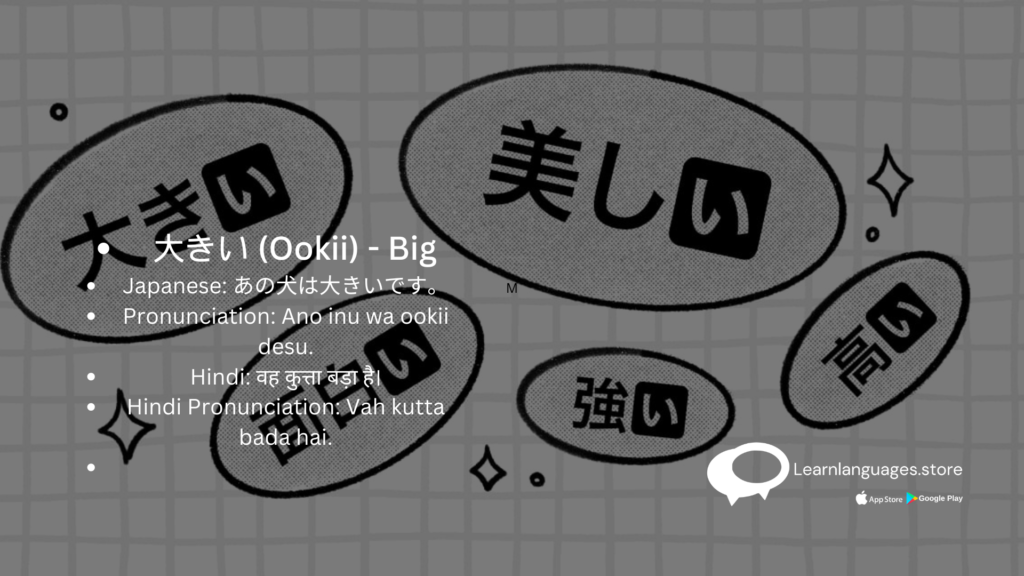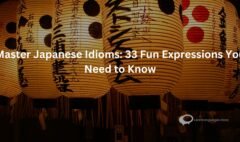Mastering い-Adjectives in Japanese: A Fun and Comprehensive Guide
Mastering い-Adjectives in Japanese: A Fun and Comprehensive Guide
Estimated reading time: 4 minutes

INTRODUCTION:
こんにちは (Konnichiwa)! Welcome to our blog where we dive deep into the fascinating world of Japanese grammar. Today, we’re going to explore the wonderful world of い-adjectives (i-adjectives) – those versatile descriptive words that end in “い.” Whether you’re a beginner or an advanced learner, understanding い-adjectives will add color to your Japanese conversations and make you sound like a native speaker. Let’s dive in with some fun examples, humorous twists, and in-depth explanations!
What Are い-Adjectives?
い-adjectives are descriptive words that end in the syllable “い.” These adjectives are used to describe various characteristics such as size, color, shape, emotion, and more. They are an essential part of the Japanese language and are used in everyday conversations.
Examples of い-Adjectives
- 楽しい (Tanoshii) – Fun
- Japanese: このパーティーは楽しいです。
- Pronunciation: Kono paatii wa tanoshii desu.
- Hindi: यह पार्टी मजेदार है।
- Hindi Pronunciation: Yah party mazedar hai.
- 美しい (Utsukushii) – Beautiful
- Japanese: その花は美しいです。
- Pronunciation: Sono hana wa utsukushii desu.
- Hindi: वह फूल सुंदर है।
- Hindi Pronunciation: Vah phool sundar hai.
- 大きい (Ookii) – Big
- Japanese: あの犬は大きいです。
- Pronunciation: Ano inu wa ookii desu.
- Hindi: वह कुत्ता बड़ा है।
- Hindi Pronunciation: Vah kutta bada hai.
- 小さい (Chiisai) – Small
- Japanese: この猫は小さいです。
- Pronunciation: Kono neko wa chiisai desu.
- Hindi: यह बिल्ली छोटी है।
- Hindi Pronunciation: Yah billi chhoti hai.
- 暑い (Atsui) – Hot (weather)
- Japanese: 今日は暑いです。
- Pronunciation: Kyou wa atsui desu.
- Hindi: आज गर्मी है।
- Hindi Pronunciation: Aaj garmi hai.
Sentence Structure with い-Adjectives
Using い-adjectives in a sentence is straightforward. The basic structure is:
[Subject] は [Object] が [い-adjective] です。
Let’s break it down:
- Subject: The topic of the sentence (marked by は, pronounced “wa”).
- Object: The item being described (marked by が, pronounced “ga”).
- い-adjective: The descriptive adjective.
- です (desu): A polite sentence ending.
Example Sentence
楽しいパーティーですね! (Tanoshii paatii desu ne!)
- English: It’s a fun party, isn’t it?
- Hindi: यह मजेदार पार्टी है, है ना?
- Hindi Pronunciation: Yah mazedar party hai, hai na?
Identifying い-Adjectives in a Sentence
When reading or listening to Japanese, you can easily spot い-adjectives because they end with “い.” They typically come before the noun they describe or at the end of the sentence when using “です.”
Example
おいしい食べ物 (Oishii tabemono)
- English: Delicious food
- Hindi: स्वादिष्ट खाना
- Hindi Pronunciation: Swadisht khana
Exceptions and Special Cases
While most い-adjectives follow the pattern we’ve discussed, there are some exceptions and special cases:
- Negative Form: To make an い-adjective negative, replace the final “い” with “くない.”
- Example: 楽しくない (tanoshikunai) – Not fun
- Past Tense: To express the past tense, replace the final “い” with “かった.”
- Example: 楽しかった (tanoshikatta) – Was fun
- Past Negative Form: To express past negative, replace the final “い” with “くなかった.”
- Example: 楽しくなかった (tanoshikunakatta) – Was not fun
Funny Example
私の犬は大きくて、猫は小さいです。 (Watashi no inu wa ookikute, neko wa chiisai desu.)
- English: My dog is big, and the cat is small.
- Hindi: मेरा कुत्ता बड़ा है, और बिल्ली छोटी है।
- Hindi Pronunciation: Mera kutta bada hai, aur billi chhoti hai.
Conclusion
Understanding and using い-adjectives is a crucial part of mastering Japanese. These adjectives bring your descriptions to life, whether you’re talking about the weather, food, or even your giant dog and tiny cat. Remember the structure, keep an eye out for exceptions, and practice with as many funny and everyday examples as possible. The more you use い-adjectives, the more natural they will become in your conversations.
-
Product on sale
 Japanese N3
Japanese N3₹42,600.00
₹62,600.00 -
Product on sale
 Japanese N4
Japanese N4₹24,300.00
₹32,600.00 -
Product on sale
 Japanese N5
Japanese N5₹16,300.00
₹18,300.00
Learn Languages Store
Vashi,
Email: services@learnlanguages.store








